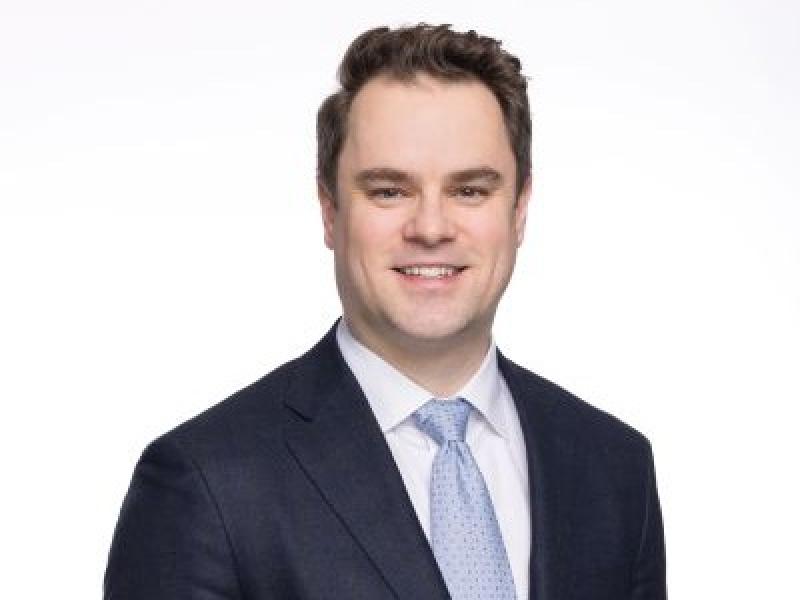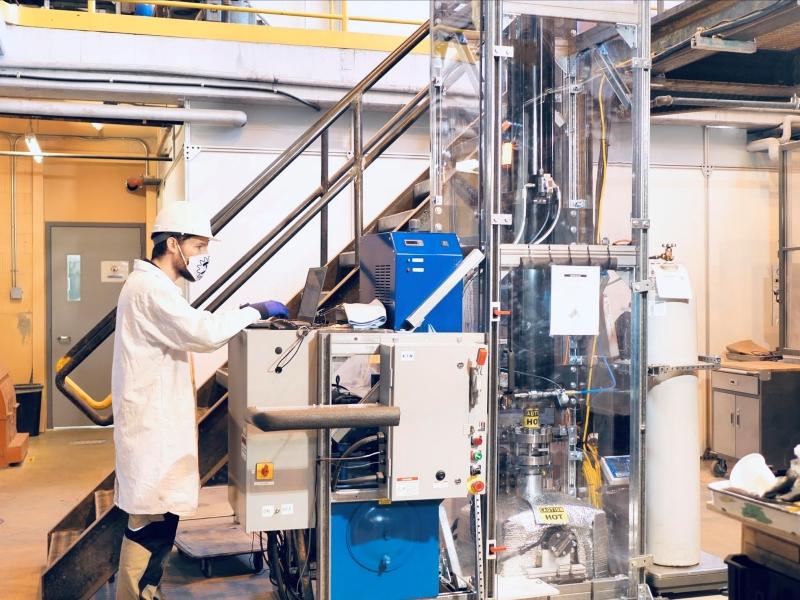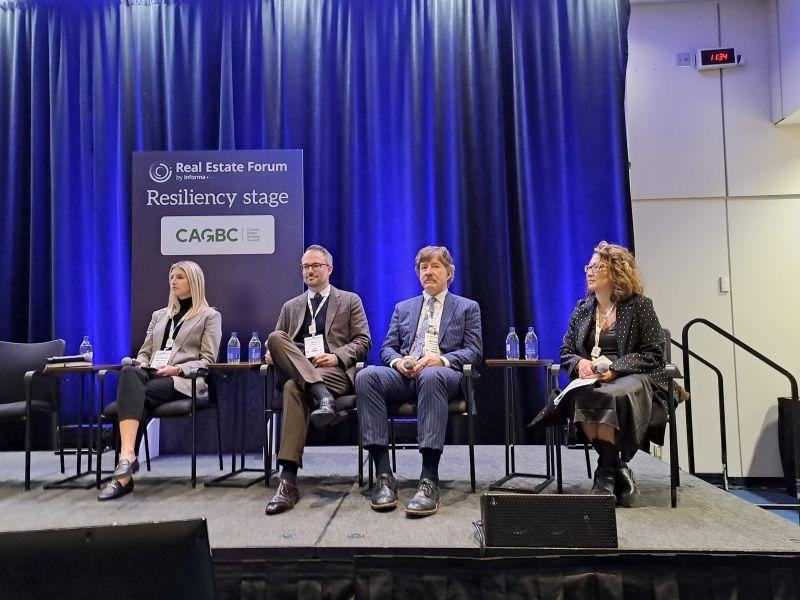
Phil De Luna believes carbon capture is one of the critical pieces of the decarbonization puzzle.
In his capacity as chief carbon scientist at Deep Sky, a carbon capture company based in Montreal, De Luna is committed to taking the technology to the next level.
Deep Sky is currently building a carbon removal pilot facility in Quebec in partnership with U.K. startup Airhive that will have the capacity to remove 1,000 tonnes of carbon dioxide (CO2) per year, making it one of the largest installed end-to-end direct air capture (DAC) systems in the world.
Heading up this ambitious program is De Luna, who believes the world will need to sharply accelerate deployment of carbon capture plants or risk falling short of net-zero emissions by 2050.
"If you look at the statistics, every year we continue to miss our targets on carbon reductions at a rate that is quite frankly terrifying, so we better have a tool like carbon capture as a backstop," De Luna told Sustainable Biz Canada.
"In my view we've already blown past the 1.5C (global temperature rise) benchmark, but we just don't know it yet. But it's clear that real world warming is far worse than what our earlier emissions projections led us to believe would be the case.
"So if we take that to be true, we know that we actually have to go negative (on emissions) – we can't out-efficient our way out of this problem. We can never attain climate security strictly by means of reducing carbon emissions."
Deep Sky's Canada-wide carbon removal infrastructure program
Deep Sky recently raised over $50 million in new funding to build its initial carbon capture plant. The cleantech startup expects this pilot project will be the first of many such facilities that it intends to roll out during the coming decade.
"We're accepting the first deliveries of our pilot units in September and then very quickly we're going to be expanding our commercial operations and scaling up to a 3,000 tonnes per year pilot facility," De Luna added.
"Then beyond that, we're planning on scaling up to 50,000 tonnes, to 100,000 tonnes, to 500,000 tonnes and ultimately to one million tonnes per year of carbon removal."
Deep Sky was founded by Fred Lalonde, the CEO of Hopper, the most-downloaded travel app in North America, which sells $7 billion of travel and travel financial services per year, alongside co-founders Joost Ouwerkerk, Deep Sky CTO and former Hopper CTO; and Laurence A. Tosi, managing partner and founder of Westcap.
Last year the company brought on Damien Steel to serve as CEO. Steel is a veteran venture capitalist who previously served as managing partner and global head of ventures at OMERS Ventures, the multi-billion-dollar Ontario-based pension fund.
Deep Sky's business model is based on scaling up carbon capture, depositing it in environmentally safe geologic formations across Canada and selling this stored CO2 to its leading carbon credit customers.
At present, the International Energy Agency estimates there are less than 30 DAC plants in operation worldwide, with another 130 in development. Deep Sky intends to raise as much as $500 million to see its landmark carbon capture plant scale up to its projected 300,000- to 400,000-tonne capacity.
Tech whiz kid bent on saving the planet
At age 32, De Luna is one of the world's leading authorities on carbon removal. He is also in charge of the company's Alpha Labs project that will serve as an incubator for 12 other DAC tech projects as well as five separate direct ocean capture technologies.
De Luna regards the challenge of scaling up carbon capture technology as his personal mission in life.
"I often joke with people that when I die, I want my Wikipedia page to read that Phil De Luna was responsible for X millions of tons of CO2 removed in his lifetime," De Luna said.
Having earned his PhD in materials science and engineering from the University of Toronto, De Luna was at age 27 the youngest person ever appointed as a director at the National Research Council of Canada (NRC), where he headed up the Materials for Clean Fuels Challenge program.
Working out of the NRC's Energy, Mining and Environment Research Centre, De Luna developed and led a $57-million research program on Canada-made transformative technologies to achieve net-zero emissions by 2050.
Adding to his resume, Forbes Magazine named De Luna to its 30 Under 30 sustainable energy awards list in 2019. De Luna was also a finalist that year in the prestigious $20 million Carbon XPRIZE competition. He even ran – and eventually lost – as a Green Party candidate in the 2021 federal election, which marked a brief six-month pause in his scientific pursuits.
Deep Sky made De Luna an offer he couldn't refuse
De Luna joined Deep Sky early in 2023 after co-founders Lalonde and Ouwerkerk sought him out to head up their carbon removal tech division.
"I was in the process of licensing technology from a colleague at U of T as part of my plan to launch my own company," De Luna recalled. "But then Fred and Joost met with me and told me they were looking for developers to pilot their technology . . . I thought they were looking to fund my startup, or pre-purchase my first pilot project. So I was thinking 'I'm off to the races.'"
It turned out the Deep Sky bosses wanted to recruit him to join their startup and lead their carbon removal program.
"They said, 'Phil, come join us, come to Deep Sky, and we'll teach you how to build a billion dollar business while you teach us about the science. And in a few years, if you still want to start your own company, we'll support you.' And I said, 'That's an offer I can't refuse!'"
The potential of carbon capture
De Luna believes carbon capture is an essential technology that needs to play a far greater role in reducing emissions from the oil and gas, steel, cement, fertilizer, transportation and heavy industry sectors which are technically difficult or prohibitively expensive to abate.
According to estimates from the Center for Climate and Energy Solutions, carbon capture can achieve 14 per cent of the emissions reductions needed by 2050. Other estimates put the range at between eight per cent and 15 per cent.
"I believe that (carbon capture share of emissions reductions) is going to be far greater than 15 per cent. Unfortunately, the world will continue to miss its carbon reduction targets and that we will fail to decarbonize as a society fast enough . . . That also means that carbon capture will continue to become more and more important."
Deep Sky prospecting for safe carbon storage sites across Canada
The obverse side of carbon removal is storage. Deep Sky is prospecting for safe underground storage sites across Canada in preparation for the increasing volume of CO2 it expects it will need to dispose of.
"Right now we're actively looking at locations across Canada according to our plans to develop commercial carbon removal projects including Alberta, British Columbia, Saskatchewan and Ontario," De Luna explained.
"The storage reserves that we've identified in Western Canada have enough potential to store every tonne that humanity has ever emitted since the Industrial Revolution. And that's all due to the geologic deep sealing aquifer and storage potential in Alberta, Saskatchewan and some parts of Manitoba."
Deep Sky and De Luna have a long road to travel, however, to make a meaningful dent in reducing carbon emissions.
"I didn't believe that I could do the job that I'm doing today unless I started my own company. I didn't think this job existed," he observed. "So I'm thrilled, excited, and I wake up every day with the feeling that I just can't wait to get to work."










